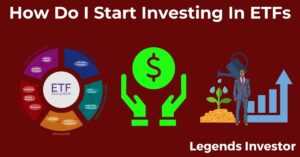Stepping into the world of investing feels like standing on the edge of a whole new universe, right? It’s exciting, but also a bit like trying to speak a foreign language without a phrasebook. The investment realm is packed with potential, whether you’re dreaming of buying your first home, starting a business, or just padding your retirement pot. But before visions of dollar signs start popping into your head, it’s key to set goals that are real and tangible. Got dreams? Awesome. Now, mold them into achievable targets.
Real talk: money brings out emotions. There’s the thrill of seeing your investments go up and the gut-punch when they drop. And for beginners, separating your emotions from your finances can get tricky. The first pit-stop on this ride is a reality check—acknowledge that ups and downs are just part of the journey.
Remember, the biggest rookie mistake is jumping in without a map. Knowing where you’re going and why you’re investing keeps you grounded. Define what success looks like for you. Is it building an emergency fund, creating wealth for retirement, or something else entirely? This sense of clarity isn’t just comforting—it’s crucial.
Mistake 1: Ignoring the Basics – The Foundation of Investing
Jumping into the world of investing without grasping the basics is like trying to run a marathon without ever lacing up sneakers before. It’s tempting to skip the foundational stuff, especially when all those complex charts and numbers start dancing before your eyes.
First up, get cozy with key concepts and terms. Understanding things like ‘compounding interest’ isn’t just smart; it’s essential. This magical little force lets your money work for you over time, creating a snowball effect that can help your wealth grow exponentially.
When chatting about investment vehicles, think of stocks, bonds, and mutual funds as your toolkit. Stocks are those exciting roller coasters with highs and lows, while bonds are more of a steady, reliable choice. Mutual funds involve grouping your money with others to invest in a diversified mix of stocks and bonds.
Taking the time to get these basics down pat sets you up for smoother sailing ahead. It arms you with the knowledge to decode what’s happening in the market and make informed decisions that align with your goals. Investing without this groundwork would be like setting sail on open seas without a compass.
Mistake 2: Over-Reliance on Trends and Tips Without Research
Leaping onto the latest investing trend or chasing hot stock tips can feel like a shortcut to success, but often, it leads to a dead end. Think of it as following GPS directions without checking if there’s a cliff ahead.
Blindly following the hype without doing your homework is risky business. Trends might promise quick wins, but they can also blindside you with sudden drops. It’s all too easy to get swept up when everyone else seems to be raking in profits.
The real deal is in thorough research and critical analysis. Knowing where your investment information is coming from is crucial. Make sure you’re consuming your info from credible sources, not just headlines or social media buzz.
Embrace a mindset of skepticism and curiosity. Ask the why and how behind each story. Are there strong financials and credible evidence backing up a company’s potential, or is it all style without substance? Learning to dig into the data is a skill that’ll pay dividends—literally.
Doing your own homework empowers you to make decisions that aren’t just impulsive reactions to flashy news but informed choices aligned with your goals.
Mistake 3: Neglecting Diversification
Putting all your eggs in one basket might work for a picnic, but in investing, it’s a no-go. Diversification is your secret weapon for managing risk and maximizing potential returns.
Think of it as spreading your wings. Investing in different asset classes like stocks, bonds, and real estate helps cushion against big losses. If one sector takes a hit, you’ve got others holding the fort.
It’s not just about different types of investments, though. Consider spreading your money across various industries and geographies too. This kind of diversification adds layers of protection and growth opportunities.
Taking time to diversify isn’t about playing it safe; it’s about being smart with your finances. This strategy helps smooth out bumps in the market and provides a more stable path towards your goals.
By balancing your portfolio across a mix of investments, you protect yourself against unpredictable shifts and ensure a healthier financial future.
Mistake 4: Emotional Decision-Making – Trusting Gut Over Data
Emotions can sneak up on you, especially in the thrilling, sometimes nail-biting world of investing. It’s easy to let excitement or panic drive your decisions, but that’s a risky way to play it.
Recognizing your emotional triggers is the first step towards maintaining a cool, collected approach. Maybe you tend to buy on impulse when a stock’s soaring or sell in fear when a downturn hits. These emotional reactions might give you short-term satisfaction but can lead to long-term regret.
Sticking to a plan helps keep emotions in check. Developing a systematic approach to trading means making decisions based on data and strategy, not feelings. Having a set of rules you stick to, no matter the emotional pull, is a powerful tool in your investing kit.
Embracing techniques to stay calm under pressure is key. Mindfulness and reflection can help you understand your emotional responses and guide you in making rational, balanced decisions. Remember, cultivating a mindset that values thoughtful analysis over knee-jerk reactions will serve you well on your investment journey.
Mistake 5: Underestimating the Power of Fees and Costs
Fees might seem like tiny drips, but over time, they can turn into a steady stream eroding your returns. Ignoring these costs is a common slip-up that can quietly chip away at your wealth.
Knowing what you’re being charged is crucial. Management fees, trading costs, and those sneaky hidden charges can pile up faster than you think. It’s vital to nail down exactly what you’re paying for and why.
The impact of these expenses on your long-term returns is often underestimated. A seemingly small fee might not matter much over a year, but multiply it by decades, and it’s a different story altogether.
The good news? You can take steps to protect your pocket. Consider low-cost investment options like index funds or ETFs, which typically offer a cost-effective path to diversification.
Keeping an eye on fees isn’t just about being savvy; it’s about ensuring your money works harder for you. Understanding these costs means you’re making informed decisions, making your investment journey all the more rewarding.
Mistake 6: Ignoring Risk Management and Assessment
Ignoring risk management is like navigating a city without a map. Risk comes in all shapes and sizes in the investment arena, and understanding it is crucial to building a sturdy financial plan.
Let’s break down what risk really means. It’s not just about the chance of losing money, but also encompasses market volatility, credit risk, and interest rate fluctuations. Knowing these different types helps in crafting strategies to safeguard your assets.
Consider using tools and techniques to assess and manage these risks effectively. Diversification is a solid start, but you might also want to explore hedging strategies or adjusting asset allocations according to market conditions.
Aligning your risk management with your financial goals is where the real value lies. Everyone’s risk tolerance is different, so be realistic about what you can handle and set up your portfolio accordingly. This personalized approach ensures that you’re prepared, come what may.
Staying informed and adaptable does wonders for risk management. It’s about foreseeing potential challenges, not only surviving them, making sure you’re always a step ahead in the game.
Mistake 7: Short-Term Focus Over Long-Term Perspective
Chasing quick gains can be tempting, especially when new to investing, but focusing on the short term can lead to hasty decisions and stress. It’s easy to react to the immediate noise of the market, but doing so often means missing the bigger picture.
Cultivating a long-term perspective isn’t just good for your nerves—it’s a strategy backed by historical data. Over time, markets have shown resilience and growth, but these patterns reward patience rather than impulsive moves.
Aiming for long-term outcomes helps you to weather the bumps along the road. Instead of getting caught up in the day-to-day fluctuations, understand that these are part of the natural rhythm of the market.
Review success stories of seasoned investors who let time do the heavy lifting. They’ve seen how holding onto investments through thick and thin often translates into significant gains over the years.
By sticking to a plan and being patient, you align your strategies with the inherent ups and downs of the market, laying a solid foundation for future financial health. Stay focused on your end goals, and let the market do its dance without swaying your commitment.
Conclusion: Building a Path Towards Informed and Confident Investing
Transforming into a savvy investor is a journey, not a sprint. Each pitfall discussed isn’t just a cautionary tale but a stepping stone towards becoming more informed and confident.
The key takeaways here? Always prioritize understanding over hype, and balance your emotions with data-driven decisions. Keep an eye out for hidden fees, and remember that diversification is your ally.
Approach investing as a continuous learning curve. The market’s landscape shifts, but with clarity in your goals and patience in your approach, you’ll navigate these changes like a pro.
Crafting an investment strategy that evolves with your growing knowledge and experience ensures resilience and adaptability. Be proactive in expanding your understanding, seeking new insights regularly.
Ultimately, by embracing a thoughtful investment mindset, you build not just a portfolio but a lifelong habit of financial growth and stability.



